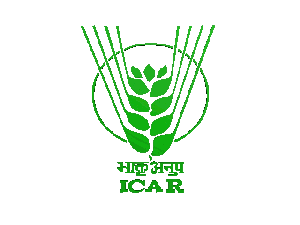Challenges due to effects of diseases and parasites
The geographical and seasonal distributions of many infectious diseases, particularly those that are
vector borne, as well as those of many macroparasites and pests of various kinds are affected by
climate. Pathogens, vectors, and intermediate and final hosts can all be affected both directly by the
climate (e.g. temperature and humidity) and by the effects of climate on other aspects of their habitats
(e.g. vegetation). If the climate changes, hosts and pathogens may be brought together in new locations and contexts, bringing new threats to animal health and new
challenges for livestock management and policy.
During recent decades, there have been significant changes in the incidence rates and/or distribution
of several vector-borne diseases, including dengue, trypanosomiasis, leishmaniasis, Lyme disease,
tick-borne encephalitis and bluetongue.
Interpretation of observed changes and prediction of future trends in disease distribution and impact is
complicated by numerous factors that act simultaneously, and interact, with climate change.
Prominent among these interacting factors are changes to landscape and land cover, changes in the
abundance of disease hosts including wildlife hosts, public health measures, trade, movements of
human and animal populations, and a range of management, sociocultural, economic and political
factors.
Changes to seasonal climates can have a significant influence on disease distribution. In the case of
many tropical diseases, it is the cold of winter that prevents them from becoming problems in
temperate zones. Shorter or warmer winters may enable pathogens to become established in new
areas. Seasonal changes can also affect disease epidemiology in more complex ways as the lifecycles
of the various organisms that play, or potentially play, a role in disease transmission are affected. For
example, there may be an increase in the temporal overlap of the active phases in the lifecycles of
such organisms, providing new opportunities for disease transmission. Moreover, the various factors
that affect the rate of transmission of vector-borne diseases may be simultaneously affected by
changes to temperature, potentially leading to large increases in the impact of the disease. Beyond
certain thresholds of temperature, faster rates of development may mean that pathogens are able to
utilize additional species as vectors.
Specific short-term weather events and/or seasonal rainfall patterns are known to be triggers for
outbreaks of many diseases, including Rift Valley fever, African horse sickness, peste des petits
ruminants, bluetongue and anthrax. It is predicted that climate change will lead to increases in the frequency of extreme weather
events such as floods and droughts (IPCC). Flooding can contribute to the spread of waterborne
diseases and diseases that are spread by vectors that have aquatic phases
in their life cycles. Restrictions to water availability can also contribute to the spread of disease.
Rapid spread of pathogens, or even small spatial or seasonal changes in disease distribution, whether
driven by climate change or not, may expose livestock populations to new disease challenges. The
significance of this is not only that a larger number of animals may be exposed, but also that they are likely to lack the genetic resistance or acquired immunity that might have emerged had the animals or
their ancestors previously been exposed to the diseases. The newly exposed populations may therefore
experience more serious clinical disease. The problem may be confounded by a lack of experience on
the part of the local livestock keepers in preventing and treating the unfamiliar diseases.
Animal genetic diversity potentially plays an important role in adapting production systems to the disease related
effects of climate change, but this diversity may be in turn be threatened by these
effects. There are several ways in which such threats may operate: large numbers of animals may die
as a result of disease epidemics; large numbers of animals may be culled in disease-control
programmes; disease pressure may be one among several factors that contribute to making livestockkeeping
livelihoods unsustainable; and regulations brought in to combat disease may restrict the type
of livestock keeping practised and thereby threaten the associated AnGR.
The most severe recent epidemics in terms of the numbers of livestock lost – those in which millions
or hundreds of thousands of animals have been culled or died from disease – have involved quite a
narrow range of diseases: most notably foot-and-mouth disease, avian influenza, African swine fever,
classical swine fever and contagious bovine pleuropneumonia. The extent to which these epidemics have affected AnGR diversity is
not well understood.
|

